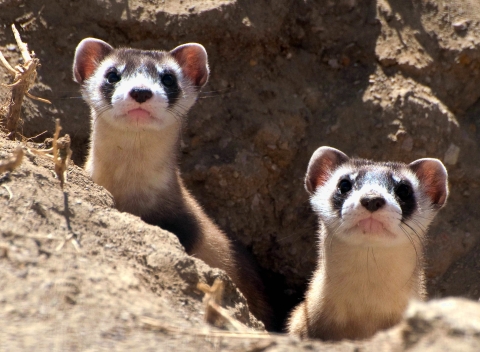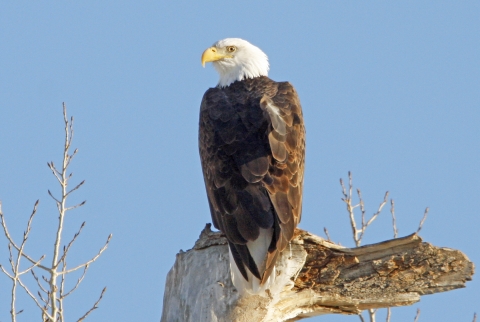About Us
This 15,000 acre site provides a Refuge for both wildlife and visitors. Through wildlife management, species like the endangered black-footed ferret are thriving in the wild and raising their young. The bison herd continues to grow and graze keeping native grasses healthy and robust.
Planting and restoring native grasses and plants provide shelter, food, and nesting materials for wildlife. As these species and others continue to thrive so do visitors and their experiences. With 20 miles of hiking trails, bicycling, fishing, archery, photography, and nature programs visitors can disconnect from the busy urban world, relax in nature, and get some exercise too!
The Refuge continues to see a steady increase in visitation as more urban people seek opportunities to connect with nature. This Refuge is here for wildlife, our communities, and visitors from all over the world. And best of all, it's free to visit!
Our Mission
Each unit of the National Wildlife Refuge System is established to serve a statutory purpose that targets the conservation of native species dependent on its lands and waters. All activities on those acres are reviewed for compatibility with this statutory purpose.
The 1992 Rocky Mountain Arsenal National Wildlife Refuge Act:
- To conserve and enhance populations of plants, fish, and wildlife including waterfowl, raptors, songbirds, and other water birds.
- To conserve species listed as threatened or endangered under the Endangered Species Act and species that are candidates for such listing.
- To provide maximum fish- and wildlife-oriented public uses at levels compatible with conservation and enhancement of fish and wildlife habitat.
- To provide opportunities for compatible scientific research.
- To provide opportunities for compatible environmental and land use education.
- To conserve and enhance land and water to conserve and enhance the natural diversity of fish, wildlife, plants, and their habitats.
- To protect and enhance aquatic habitat.
- To fulfill international treaty obligations of the United State for fish, wildlife, and their habitats.
Our History
Prior to becoming a Refuge, the Apache, Arapaho, Cheyenne, Comanche, and Ute followed large herds of bison and lived off the land. Later, as settlers moved west to start a new life, they began growing crops and grazing cattle.
Following the attack on Pearl Harbor, the U.S. Army transformed the area into a chemical weapons manufacturing facility called the Rocky Mountain Arsenal to support World War II. As production declined at war's end, a portion of the idle facilities were leased to Shell Chemical Company for the production of agricultural chemicals. The Arsenal was later used for Cold-War weapons production and demilitarization.
Transition to a National Wildlife Refuge
The Arsenal is one of the most studied environmental restoration sites in the country. Following an extensive site evaluation in the early 1980s, the Army and Shell began a comprehensive environmental cleanup under the oversight of federal, state, and local regulatory agencies.
Soon after, a roost of bald eagles was discovered prompting the U.S. Fish and Wildlife Service to become involved in managing wildlife at the site. The discovery also led Congress to designate the site as a national wildlife refuge national wildlife refuge
A national wildlife refuge is typically a contiguous area of land and water managed by the U.S. Fish and Wildlife Service for the conservation and, where appropriate, restoration of fish, wildlife and plant resources and their habitats for the benefit of present and future generations of Americans.
Learn more about national wildlife refuge in 1992.
In the mid-1990s, a unique public-private partnership formed among the Shell Oil Company, U.S. Army, and the U.S. Fish and Wildlife Service. Working with the community, they developed long-term plans to guide the cleanup of the soil, buildings, and groundwater. For more information about the Arsenal cleanup click here.
As cleanup progressed and projects met federal and state regulatory requirements, the Army transferred land to the U.S. Fish and Wildlife Service to establish (2004) and later expand the Refuge. The Arsenal’s safe cleanup program was completed in 2010, and the Refuge reached its final size of 15,000 acres making it one of the largest urban refuges in the country.





